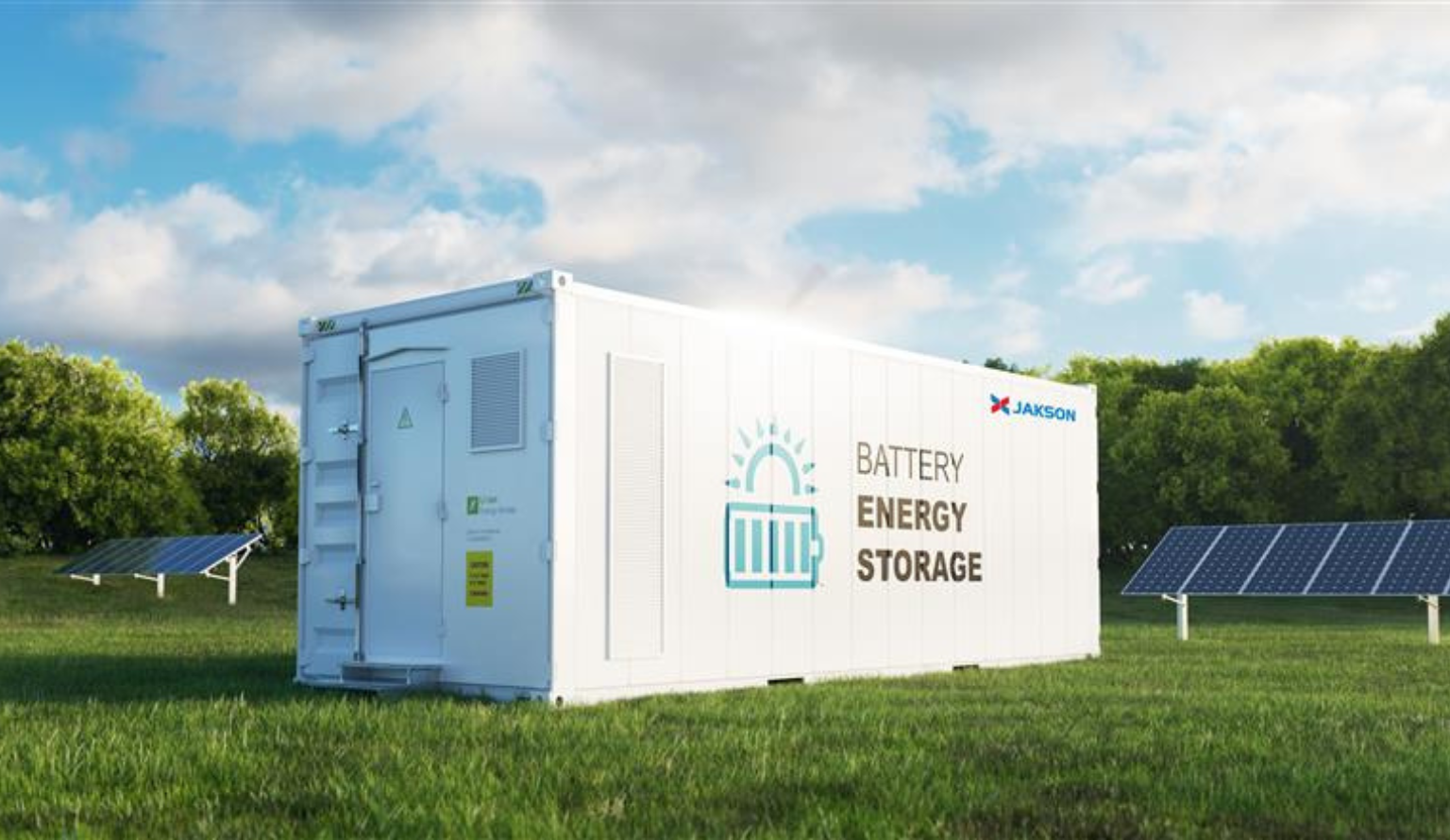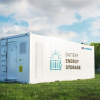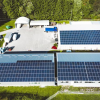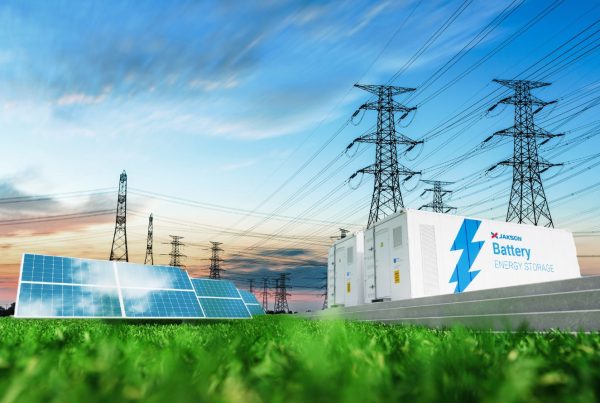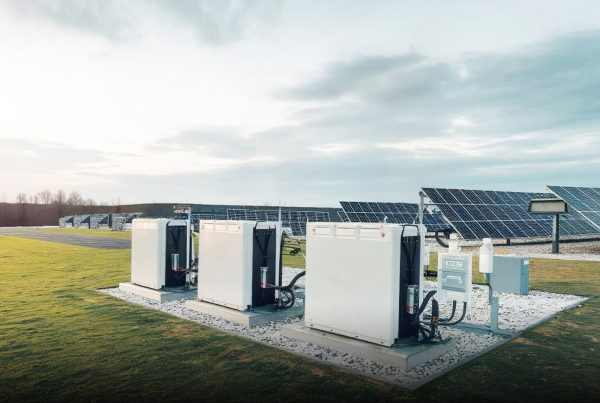The battery lifecycle from design and manufacturing to disposal and recycling plays a crucial role in building a sustainable energy future. In India’s growing clean energy ecosystem, efficient battery recycling and responsible e-waste management are vital to ensure environmental balance and long-term value recovery.
Jakson Distributed Energy, through our Battery Energy Storage Systems (BESS) branded as EnerPack, exemplifies this commitment. By understanding how batteries are designed, used, aged, and recycled, we ensure that every phase of the lifecycle contributes to both performance and sustainability. Our modular and scalable EnerPack systems are engineered for longevity, focusing on sustainable battery manufacturing and responsible material recovery.
Battery Lifecycle in Jakson’s BESS
1. Design & Manufacturing
Jakson’s BESS, marketed as EnerPack, is designed as a modular, scalable solution combining lithium-ion battery modules, hybrid inverters, and advanced energy management systems. This innovative design boasts a compact footprint and straightforward installation, allowing for modular expansion to meet diverse distributed energy requirements.
Jakson’s architecture supports flexible deployment, enabling its integration with solar, wind, or grid sources, which significantly influences the manufacturing process of modules, control electronics, and overall system packaging.
2. Performance, Cycles & Degradation
The battery lifecycle of Jakson’s EnerPack ranges from 3,000 to 8,000 charge cycles, with a lifespan of 10 to 12 years depending on operational conditions. Over time, as usage increases, battery capacity naturally declines, a common characteristic of lithium-ion technology.
By maintaining high performance over thousands of cycles, Jakson’s systems reduce replacement frequency, lowering both operational costs and the environmental impact of batteries throughout their life.
3. End-of-Life & Decommissioning
When the EnerPack reaches the end of its operational life, Jakson advocates for a comprehensive decommissioning process. We’re committed to “recycle all possible” materials from retired battery systems.
This phase involves disassembling modules, sorting electronics, structural components, and battery cells to prepare for recycling or reuse.
Jakson’s Recycling Approach
Our corporate ethos places strong emphasis on battery recycling in India, committing to “recycle all possible materials”. This ensures maximum recovery of valuable elements such as lithium, cobalt, and nickel.
By doing so, Jakson strengthens the foundation of EV battery recycling and energy storage sustainability, helping India move toward a cleaner and more efficient energy transition. This initiative also underlines our alignment with the circular economy batteries model, recovering materials, reducing raw material dependency, and minimising environmental harm.
Environmental & Economic Implications
1. Environmental Implications:
By pledging to recycle all possible materials, Jakson minimises waste and addresses the environmental impact of batteries, particularly when considering lithium-ion battery disposal.
The emphasis on a long cycle life (3,000 to 8,000 cycles over 10–12 years) translates to fewer replacements, reducing cumulative resource extraction and waste.
2. Economic Implications:
- A longer operational lifespan can defer capital replacement costs, enhancing the return on investment over time.
- The modular design enables incremental expansion rather than requiring a full system overhaul, promoting flexibility in capital deployment.
- Moreover, the commitment to recycling might capture residual material value, aiding in offsetting end-of-life costs.
Lifecycle vs Recycling Considerations
| Phase / Consideration | Specification | Key Implication |
| Cycle rating & service life | 3,000 to 8,000 cycles; 10–12 years life | Long duration before end-of-life |
| Modular design & scalability | Modular packaging, scalable deployment | Enables phased upgrades, reduces full-system costs |
| Recycling pledge | Recycle all possible from retired systems | Commitment to material recovery |
| Waste avoidance | Implicit from recycling rather than disposal | Environmental protection is part of the value proposition |
| Economic benefit | Longer life, fewer replacements, potential residual value | Lower total lifecycle cost, improved ROI |
Final Thoughts
Jakson’s holistic view of the battery lifecycle from design to battery recycling showcases a commitment to sustainability, durability, and economic efficiency. The EnerPack BESS, designed for long-term performance and responsible recycling, exemplifies how sustainable battery manufacturing and circular economy batteries can coexist to support India’s clean energy goals.
With its emphasis on extended life, modularity, and responsible recycling, Jakson demonstrates how innovation can drive both environmental protection and economic impact in the energy storage sector. The future of battery recycling in India depends on such integrated, lifecycle-oriented solutions that reduce waste and enhance value recovery.
FAQs
1. What is the typical lifecycle of Jakson’s EnerPack Battery Energy Storage Systems?
Jakson’s EnerPack BESS offers 3,000 to 8,000 charge cycles, with an operational life of 10 to 12 years, depending on usage. This extended lifecycle minimises replacement frequency and environmental impact.
2. How does Jakson ensure sustainable battery recycling India?
Jakson commits to recycling materials from retired battery systems, responsibly managing end-of-life batteries to recover resources, reduce waste, and support a circular economy.
3. What are the environmental and economic benefits of battery recycling?
Battery recycling reduces e-waste and raw material extraction, conserving natural resources. Economically, it enables material recovery, cost savings, and greater returns on energy storage investments

